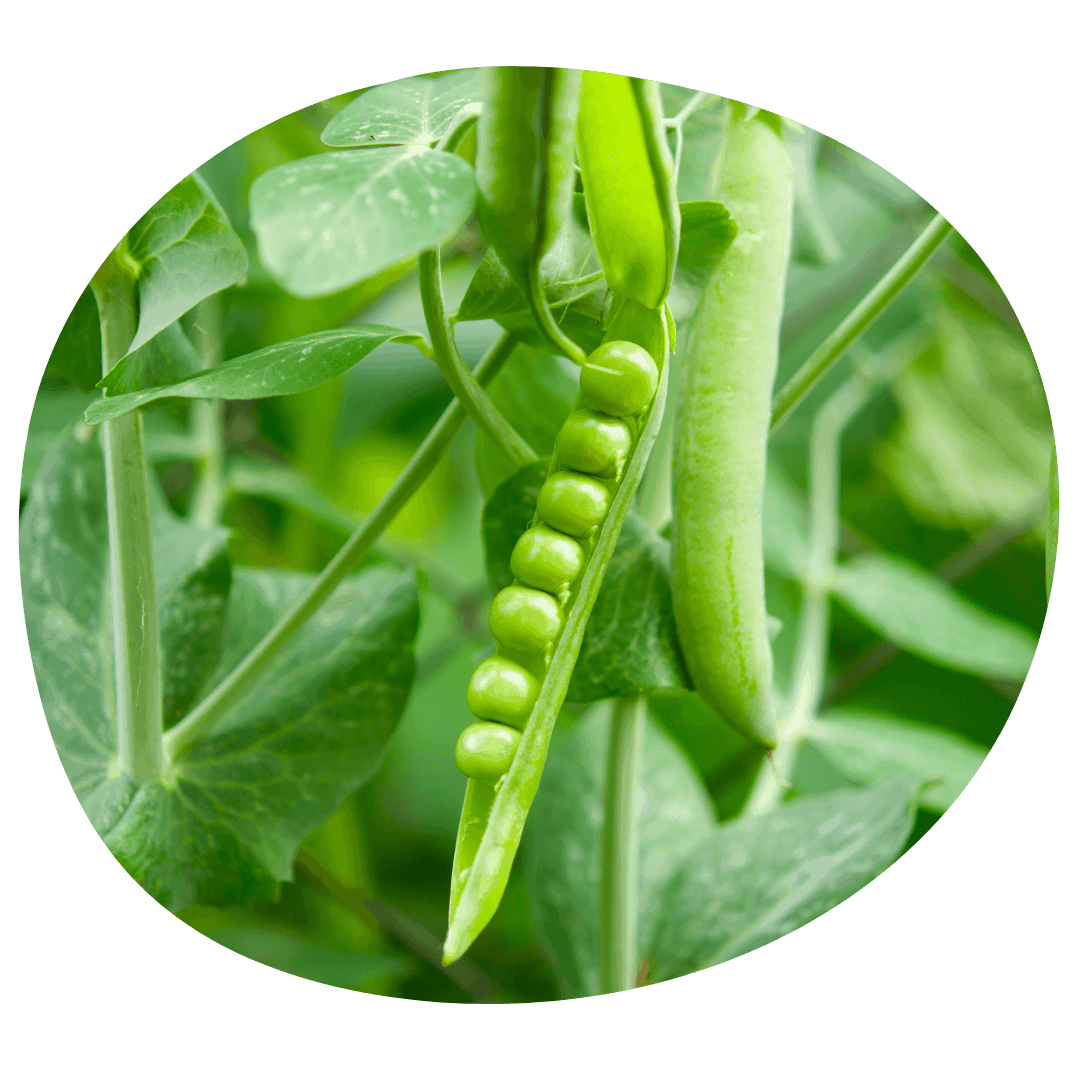How to Grow Peas
Types
Peas (Pisum sativum) may have one of two growth habits, either pole or bush. Pole peas are climbers that require support to grow in the form of a trellis, stakes, or netting. Bush peas grow to a set height, usually between 18" and 36" high, but will still benefit from support to keep their vines and pods off the ground.
Peas come in three different types: snap peas, snow peas, and shelling peas. Snap peas have juicy, edible pods that make a delicious snack straight off the vine. Snow peas have flatter pods that are likewise edible and often used in stir fries and other cooking. Shelling peas have fibrous, inedible pods that contain sweet and delicious peas used in all kinds of cooking and canning.

Growing Conditions
Peas are a quick-growing, cool-season plant with some frost tolerance that can be sown when the soil is workable in the spring. Choose a planting location that drains well and receives full sun. Peas are nitrogen-fixing, which means the plants (with the help of beneficial soil microorganisms) are able to convert nitrogen from the air into usable nitrogen in the soil. Because of this ability their fertilizer needs are minimal, but poor soil should be amended with compost before planting.
Starting
Plant your peas when soil becomes workable in the spring. An optimal soil temperature is 10°C or higher. Germination typically takes 7-14 days. Peas are sensitive to transplanting and starting indoors is not recommended. Sow your seeds about 1“ deep, 2" apart, in rows 7" apart. If adding supports, place them now to avoid disturbing growing roots after seeds germinate.
Find our full guide to seed starting here.
Care
Peas are susceptible to rot and should not be overwatered. Soil should neither be soggy nor allowed to fully dry out. Mulch can be added around the base of the plant to help retain moisture in the soil. Weed gently to avoid disturbing the shallow root systems. Hot weather can cause stress to pea plants, and row covers may be added to shade plants from the intensity of the summer sun.
Pests and Diseases
Aphids - Small green, black, or brown insects that feed on the sap of garden plants. You'll find them under leaves, at blossom tips, and in the joints of stems.
Fusarium Wilt - A fungal infection that causes plans to wilt in the sun and develop yellowed leaves. May also cause stunted growth.
Powdery Mildew - White mildew on the top surfaces of leaves, starting as small spots and growing to cover the entire leaf.
Leaf Spot/Blight - Fungal infections that cause dark spots on foliage.
Crop rotation, garden cleaning, and proper spacing between plants are the best ways to prevent problems caused by pests and diseases. Diatomaceous earth can be used to control crawling pest species, while sticky traps will catch flying pests. Row covers and insect netting can also prevent travelling pests from landing on your crops and causing damage. Ensure good drainage in your chosen planting spot to prevent problems with fungus and rot. Contact us for more specialized pest control methods such as beneficial nematodes.
Harvest
Peas may take from 30-70 days to reach maturity depending on variety. Harvest your peas early in the morning for the best flavour and texture. Be careful when picking peas not to tear the vines; we recommend using pruners or snapping each pea off the vine at its stem. Peas don't have a long storage life and should be eaten within a few days of harvest, or they may be blanched and frozen immediately following harvest.

